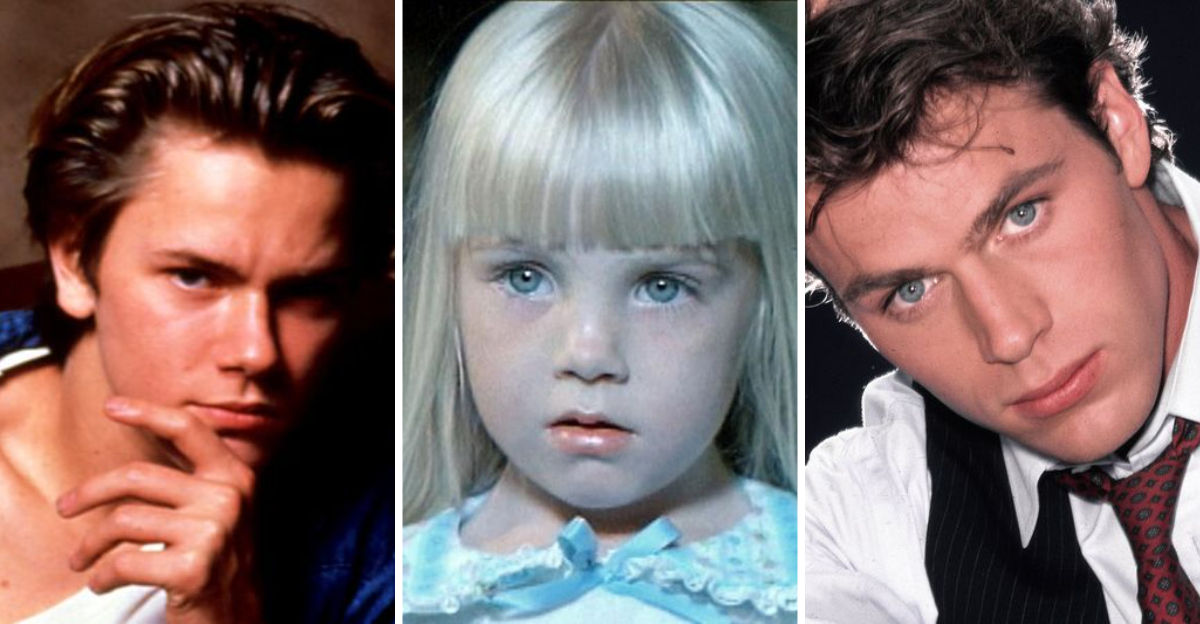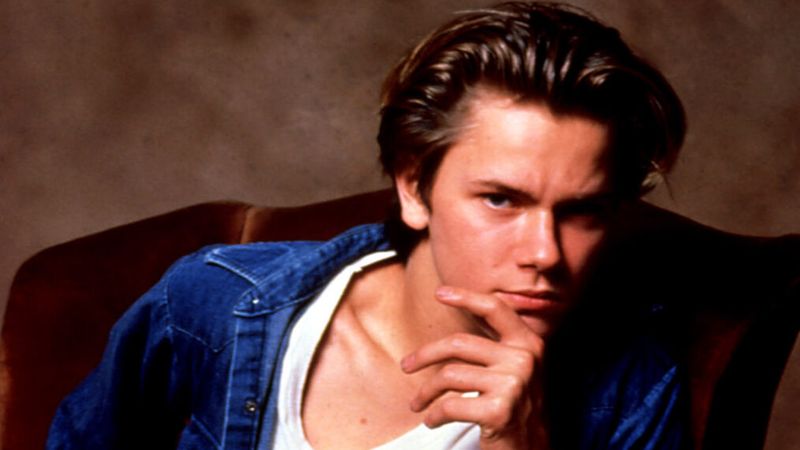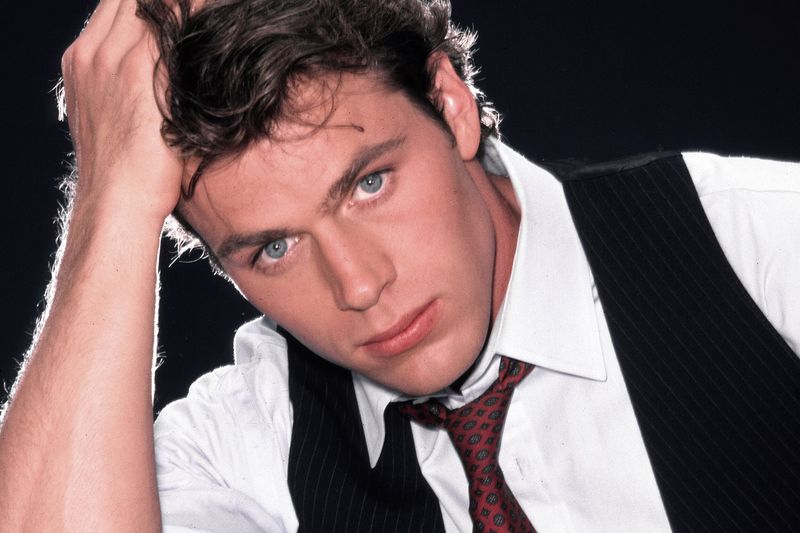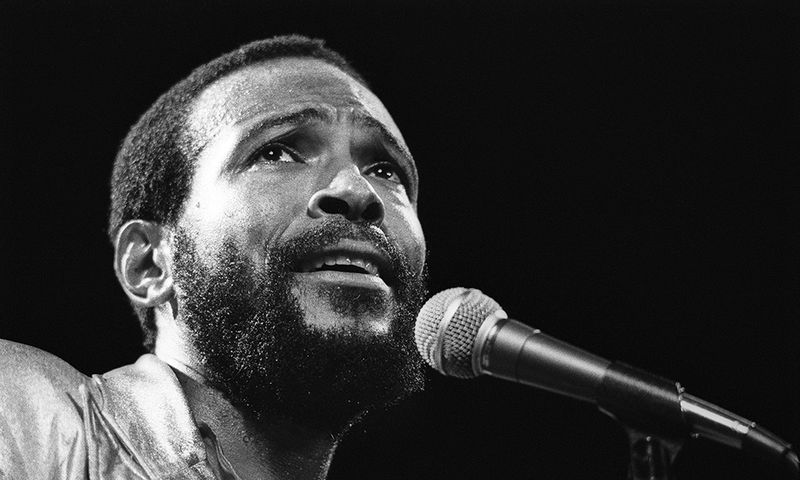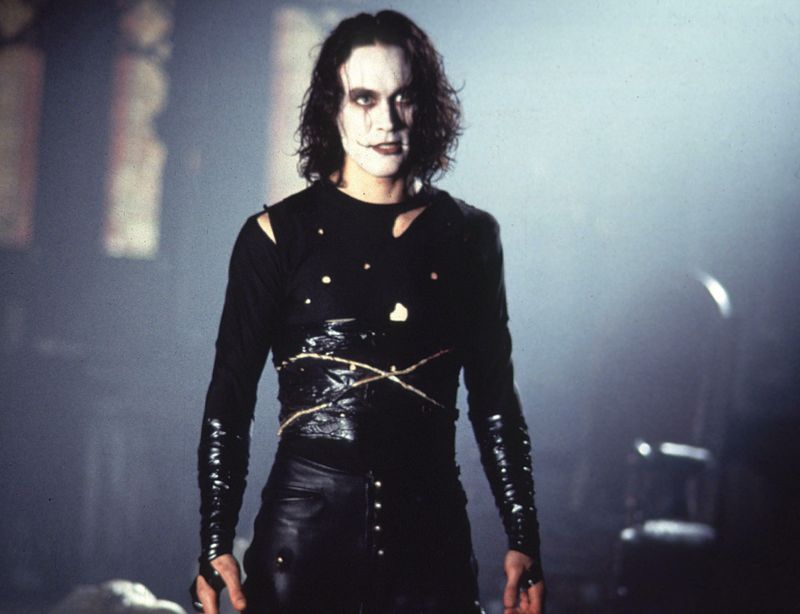The 1980s gave us unforgettable stars who shaped music, movies, and pop culture in ways we still feel today. These talented individuals captured our hearts with their unique gifts and larger-than-life personalities. Sadly, many bright lights from this vibrant decade were extinguished far too soon, leaving fans wondering what might have been if they’d had more time to share their talents with the world.
1. River Phoenix: The Sensitive Soul
When River Phoenix collapsed outside the Viper Room in 1993, Hollywood lost one of its most promising talents. At just 23, he had already earned an Oscar nomination for “Running on Empty” and captivated audiences in “Stand By Me.”
Unlike many child actors, Phoenix brought an unusual depth to his performances. His portrayal of troubled teens felt authentic because he drew from his unconventional upbringing in the religious cult Children of God.
Friends described him as deeply compassionate and environmentally conscious long before it was trendy. Despite his rising fame, Phoenix remained uncomfortable with celebrity, preferring to focus on his music with band Aleka’s Attic when not filming. His death from a drug overdose shocked fans who knew little of his private struggles.
2. Heather O’Rourke: The Poltergeist Child
“They’re heeeere!” With those chilling words, blonde-haired, blue-eyed Heather O’Rourke became the face of supernatural horror in the 1980s. Discovered by Steven Spielberg while eating lunch with her mother, the 5-year-old had no acting experience when cast in the iconic role.
O’Rourke’s angelic appearance contrasted perfectly with the film’s terrifying events. Between Poltergeist films, she appeared on Happy Days and Webster, showcasing her versatility beyond horror.
Her sudden death at just 12 years old shocked Hollywood. Initially misdiagnosed with Crohn’s disease, O’Rourke actually suffered from a congenital intestinal stenosis that caused a bowel obstruction. She passed away in February 1988 during surgery, just months before Poltergeist III hit theaters.
3. John Belushi: Comedy’s Wild Heart
The moment John Belushi arched his eyebrows or hurled himself across a stage, audiences erupted in laughter. As an original Saturday Night Live cast member, his characters—from the Samurai to the Blues Brothers—became instant classics that comedians still reference today.
Behind his anarchic public persona was a disciplined performer who meticulously crafted each chaotic moment. His film career exploded with Animal House and The Blues Brothers, making him one of Hollywood’s highest-paid comedians by 1981.
Sadly, Belushi’s legendary appetite extended beyond food to drugs and alcohol. His body was discovered in Bungalow 3 of the Chateau Marmont in March 1982 after a speedball overdose. At just 33, his death shocked America and sparked new conversations about celebrity drug culture, ending what many believe was just the beginning of an extraordinary career.
4. Dominique Dunne: A Promising Career Cut Short
Most remember Dominique Dunne as the teenager who battled supernatural forces in Poltergeist, but few know her own life ended more tragically than any horror film. The daughter of novelist Dominick Dunne brought natural charm to her role as the eldest daughter in the Spielberg-produced blockbuster.
Beyond Poltergeist, Dunne appeared in television shows like Fame and CHiPs. Her career was gaining momentum with each new role, showcasing her range beyond the screaming teen in a haunted house.
Her bright future vanished on October 30, 1982, when ex-boyfriend John Sweeney strangled her in the driveway of her West Hollywood home. She lingered in a coma for five days before dying at just 22. The case gained national attention when Sweeney received only 6½ years for voluntary manslaughter, serving just 3½ before release.
5. Andy Gibb: Pop’s Golden Boy
With his feathered hair, dazzling smile, and honeyed voice, Andy Gibb seemed manufactured for stardom. The youngest Gibb brother stepped out of the Bee Gees’ shadow in 1977 with “I Just Want to Be Your Everything,” the first of three consecutive #1 hits that made him the prince of late-70s pop.
Fame arrived with crushing pressure for the teenager. While his brothers had each other for support, Andy navigated solo stardom alone, turning to cocaine as the hits became harder to produce. His addiction cost him his relationship with actress Victoria Principal and his hosting job on Solid Gold.
After completing rehab in 1985, Andy attempted a comeback but struggled financially. He died five days after his 30th birthday in March 1988 from myocarditis, an inflammation of the heart muscle exacerbated by years of drug abuse. His death revealed how fragile the machinery of fame could be.
6. Jon-Erik Hexum: The Accidental Tragedy
With his chiseled features and athletic build, Jon-Erik Hexum seemed destined for 1980s action-hero stardom. After landing the lead in NBC’s time-travel adventure Voyagers!, his career gained momentum with the CBS series Cover Up, where he played a model-turned-secret agent.
Beyond his looks, Hexum brought intelligence to his roles. The former Michigan State University student studied biomedical engineering before pursuing acting, giving him a thoughtfulness that set him apart from typical TV heartthrobs.
Tragically, during a filming delay on October 12, 1984, the bored actor playfully put a prop gun loaded with blanks to his head and pulled the trigger. The blank’s force fractured his skull, causing massive brain hemorrhaging. Hexum was declared brain dead six days later at just 26. His organs were donated, saving several lives in a final act of generosity that friends said perfectly reflected his character.
7. Gia Carangi: Modeling’s Shooting Star
Before the term “supermodel” entered our vocabulary, there was Gia Carangi. With her piercing gaze and distinctive beauty mark, Gia revolutionized fashion photography in the late 1970s and early 1980s. Photographers praised her natural ability to transform before the camera, bringing raw emotion to previously static fashion spreads.
Her meteoric rise took her from Philadelphia working-class roots to Vogue covers almost overnight. Behind the glamorous façade, however, Gia struggled with abandonment issues after her mother left the family when she was eleven.
As heroin addiction took hold, her once-reliable professionalism crumbled. Needle marks became visible in photographs, leading to canceled bookings. By 1986, Gia became one of the first famous women to die of AIDS-related complications at just 26. Her story later inspired the acclaimed HBO film starring Angelina Jolie, introducing a new generation to modeling’s first tragic icon.
8. Marvin Gaye: The Prince of Motown
Marvin Gaye’s velvety voice defined soul music across three decades. While his career began in the 1960s, Gaye reinvented himself in the early 1980s with “Sexual Healing,” winning his first Grammy Awards and finding a new audience with MTV.
Behind the smooth persona was a deeply complex man. Gaye’s music addressed social issues, sexual politics, and personal demons with equal passion. His battles with depression, drug use, and financial problems contrasted sharply with his public image as soul’s sophisticated voice.
The circumstances of his death remain among music’s most shocking tragedies. On April 1, 1984—one day before his 45th birthday—Gaye was shot twice by his own father during an argument at their Los Angeles home. The murder stunned fans worldwide, especially as Gaye had just completed a successful comeback tour. His final album, “Midnight Love,” stands as testimony to the creative renaissance cut short.
9. Sam Kinison: Comedy’s Screaming Prophet
Few performers transformed stand-up comedy as dramatically as Sam Kinison. The former Pentecostal preacher channeled his pulpit-pounding energy into explosive routines that felt more like exorcisms than comedy sets. His signature scream punctuated observations about relationships, religion, and world hunger with unexpected force.
Kinison’s breakthrough on HBO and Rodney Dangerfield’s Young Comedians special made him the most controversial comedian of the late 1980s. Despite criticism of his material, fellow comics recognized his raw honesty and unique perspective as revolutionary.
After years of substance abuse, Kinison had recently married, gotten sober, and was rebuilding his career when tragedy struck. Driving to a performance in April 1992, his car was struck head-on by a drunk teenage driver in Nevada. Kinison initially survived the crash but died moments later at age 38, reportedly having a conversation with someone no one else could see during his final breaths.
10. Karen Carpenter: The Voice That Silenced Too Soon
Karen Carpenter’s voice contained a rare emotional purity that made even the most saccharine lyrics feel genuine and heartfelt. As half of The Carpenters with her brother Richard, she brought warmth to the AM radio waves of the 1970s, continuing into the early 1980s with hits like “Touch Me When We’re Dancing.”
Behind her wholesome image and perfect pitch lurked a devastating battle with anorexia nervosa. The pressure to maintain a camera-ready appearance in an era when female performers faced intense scrutiny about their bodies took a terrible toll.
After years of struggling with her eating disorder, Karen suffered heart failure on February 4, 1983, at just 32. Her death created the first major public awareness of anorexia, which had previously been a little-discussed condition. Music critics have since reassessed The Carpenters’ legacy, recognizing Karen not just as a beautiful voice, but as one of pop’s most influential and technically gifted vocalists.
11. Rob Pilatus: Milli Vanilli’s Fallen Half
Rob Pilatus embodied the dizzying highs and crushing lows of 1980s pop fame. As the more outspoken half of Milli Vanilli, his energetic performances with partner Fab Morvan helped sell millions of records worldwide. Their hit “Girl You Know It’s True” dominated radio while their distinctive look—long braids, spandex, and chunky boots—defined late-80s music video aesthetics.
The infamous lip-syncing scandal that stripped them of their Grammy hit Pilatus especially hard. Having once boasted they were “more talented than Bob Dylan,” the German-born performer struggled to rebuild his identity after being labeled a fraud.
Following the scandal, Pilatus spiraled into addiction and crime, attempting suicide and serving time for assault and robbery. Despite multiple rehab attempts, he died from an accidental overdose in a German hotel room in 1998, aged 32. His tragic end came just as he and Morvan were preparing a legitimate comeback album, a final cruel twist in pop music’s most cautionary tale.
12. Brandon Lee: The Dragon’s Son
Brandon Lee carried the weight of his legendary father’s legacy while carving his own path in Hollywood. The son of martial arts icon Bruce Lee brought a thoughtful intensity to his early action roles in the late 1980s with films like Legacy of Rage and Showdown in Little Tokyo.
Unlike many second-generation stars, Lee studied acting seriously at Emerson College and the Lee Strasberg Institute. Friends noted his philosophical nature and desire to be recognized for more than his famous last name.
Tragic irony surrounded his breakthrough role in The Crow, where he played a musician who returns from the dead to avenge his murder. During filming in March 1993, a prop gun improperly loaded with dummy cartridges fired a projectile that fatally wounded Lee. He died at 28, just as his career was poised for mainstream success. The film was completed using early CGI techniques and became a cult classic, its themes of love transcending death taking on unintended poignancy.
13. Rebecca Schaeffer: Television’s Rising Star
Rebecca Schaeffer’s infectious smile and natural charm made her the quintessential girl-next-door on the CBS sitcom “My Sister Sam.” After modeling in New York as a teenager, her move to Hollywood quickly paid off with roles that showcased her effortless screen presence and comedic timing.
By 1989, her career was gaining serious momentum. She had just completed filming scenes for Woody Allen’s “Scenes from a Mall” and interviewed for the female lead in “The Godfather Part III.” Industry insiders predicted she would soon transition from television to major film roles.
These promising possibilities vanished on July 18, 1989, when obsessed fan Robert John Bardo shot her at the doorway of her Los Angeles apartment. Her murder at age 21 shocked Hollywood and led to America’s first anti-stalking laws. The tragedy also ended the practice of selling fan addresses through DMV records, as Bardo had used her driver’s license information to locate her home.
